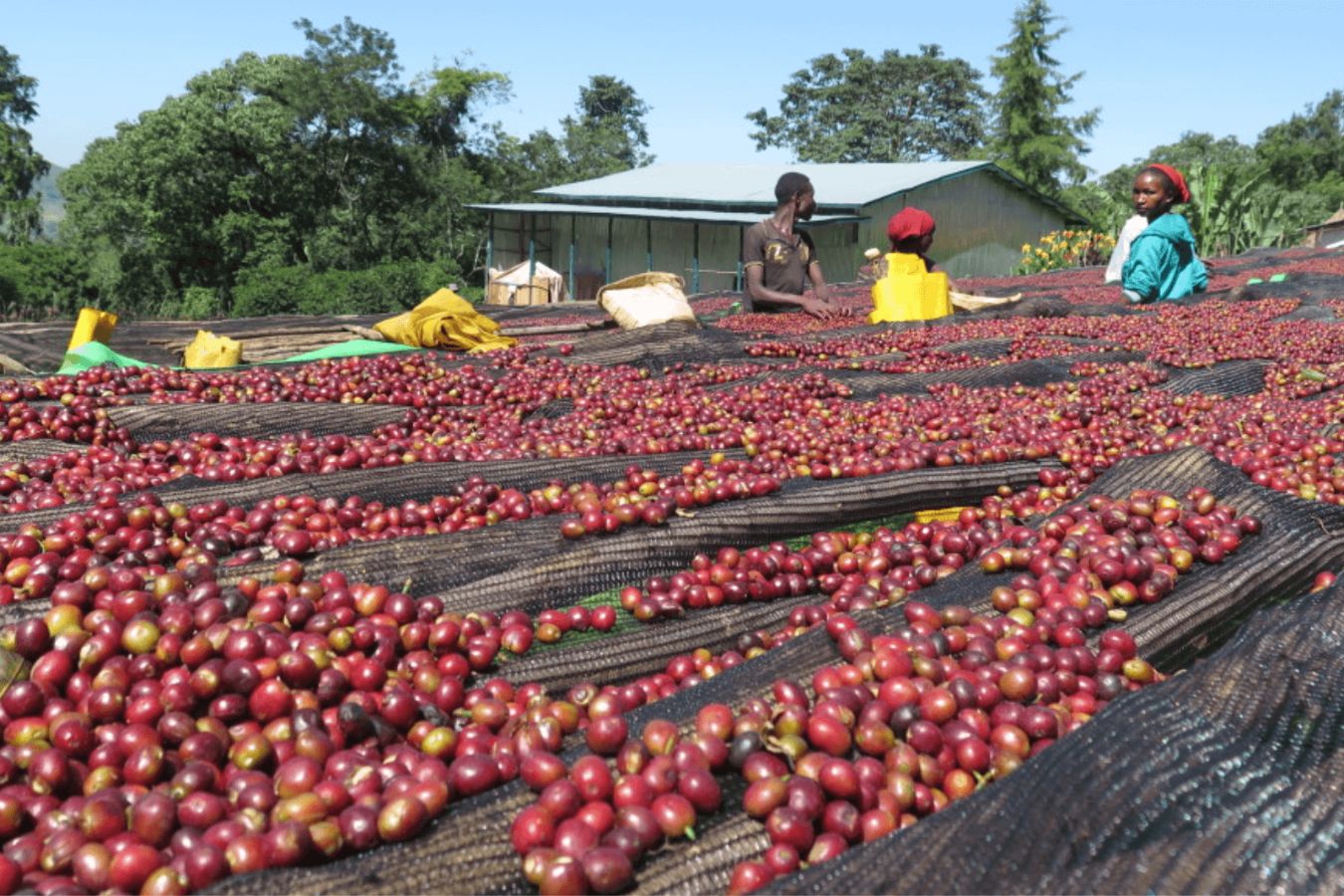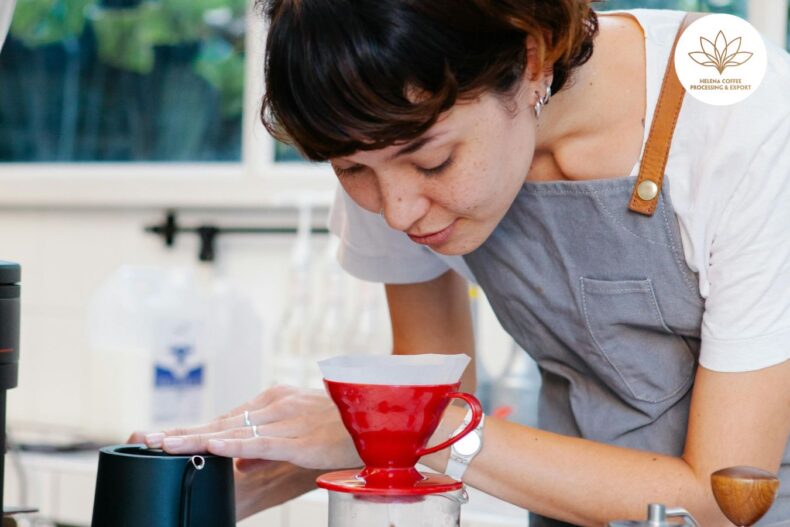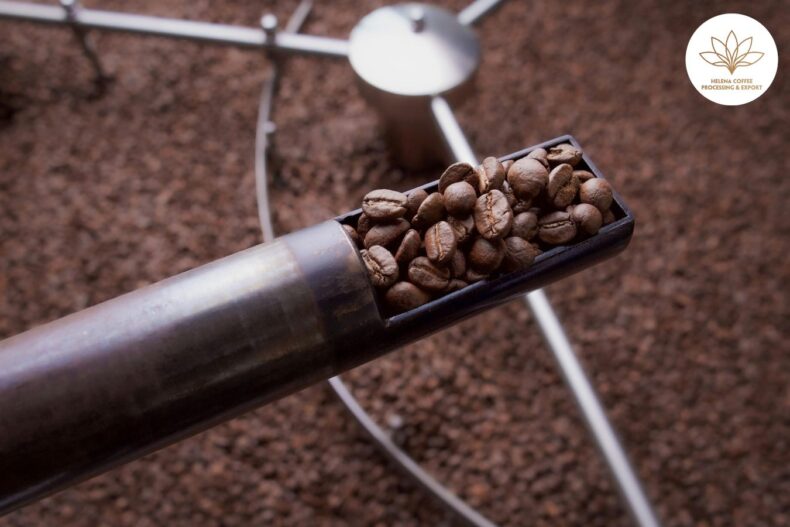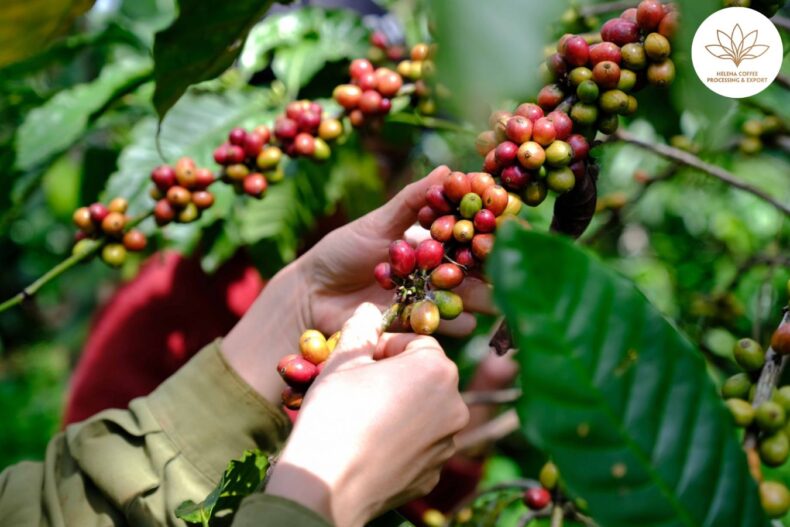
Preliminary Processing of Green Coffee With Fruits: Today, in the specialty coffee market and the commercial coffee sector, customers’ needs are very diverse and require the manufacturer to constantly update its knowledge to meet new products on the menu.
Since the first coffee fruit was prepared, we have completed studies of 3 primary methods of making green coffee – including natural, honey, and wet preparation.
But it seems that with curiosity at the complex flavors of coffee, people have constantly been experimenting with the preparation of coffee by adding a certain proportion of Fruit to the fermentation process.
“Is fruit coffee preparation a trend in the coffee business in the future?” asks today’s story. Let’s learn the Preliminary Processing of Green Coffee With Fruits with Helena!
What is fermentation during coffee preparation?
The natural fermentation begins when the ripe coffee fruits are picked down from the branch (or before that if the humidity is high enough). That’s when bacteria, yeast, and other microorganisms break down sugar molecules in the mucous layer inside the coffee fruit. In this process of production today, coffee acids and alcohol affect the taste of coffee during production.
The farmer was not interested in the fermentation process during the preparation and ignored the discovery of the abundance of microorganisms in the mucus of the fruit meat layer. Poor fermentation can produce mold or unwanted taste in a batch of coffee beans.
Understanding and controlling the fermentation process is essential for green coffee producers. Returning to customers’ needs with coffees with unique, complex and high-quality flavors, many farms have applied a few new preliminary coffee processing methods. You know, doing science and testing is not always successful.
Some farms that cooperated with us said, “Recent techniques and new demand in the specialty coffee market for small batches have made producers pay attention to the post-harvest processing portion.”
For the past decade, fermentation has been a particularly focused field for manufacturers. Coffee farmers have invested more in post-harvest strategies. Before that, they only focused on high productivity and did not care about the differences in coffee taste.
In previous years, they often tried to dry the coffee fruit as quickly as possible with a dryer or dryer. The farmer was unconcerned about the fermentation process of coffee during preparation, and he overlooked the detection of many microorganisms in the mucus of the fruit flesh layer.
Add Fruit to the Process of Ascending the Mekong
Recent experiments describe incorporating Fruit into coffee fermentation from farm producers. A good example is brewing fresh fruit or fruit juice (apples, sugar cane, and tangerine) and ripe coffee in sealed containers or sealed bags.
This mixture is fermented for about 1 hour to several hours, depending on the experiment, and the temperature of the mix is also strictly controlled throughout the incubation process. Some farms receive excellent feedback from the finished product. They notice a significant increase in cupping scores.
But there’s a question they’re asking: Does Fruit really interfere with increasing the quality of coffee, or is it simply the nature of that coffee that’s already good.” This shows that they need to try again with different batches and more fruits, To get an overview.
Fermentation control remains a relatively new segment in the green coffee processing industry. After all, the core is the fermentation and nature of coffee production today variety. The results will be much easier if you start with a good batch of coffee. But when starting with a collection of shoveled coffee, you’ll struggle to patch up their quality.
Sustainability of New Green Coffee Preparation Methods
Leading the market and becoming an influential brand is the ideal model for which farms and roasters want to aim. Drinking coffee is more of a habit than enjoying a luxury item, so give your customers things they’re familiar with.
But from a positive perspective, studying modern methods of making green coffee will diversify the customer experience, opening up new horizons in the knowledge of in-depth coffee.
To do that, manufacturers must carefully research well-documented and well-documented tests that will allow them to refine their processing and produce scalable results. Manufacturers can experiment with innovation without much risk regarding their finances or coffee taste with meticulousness and care.


